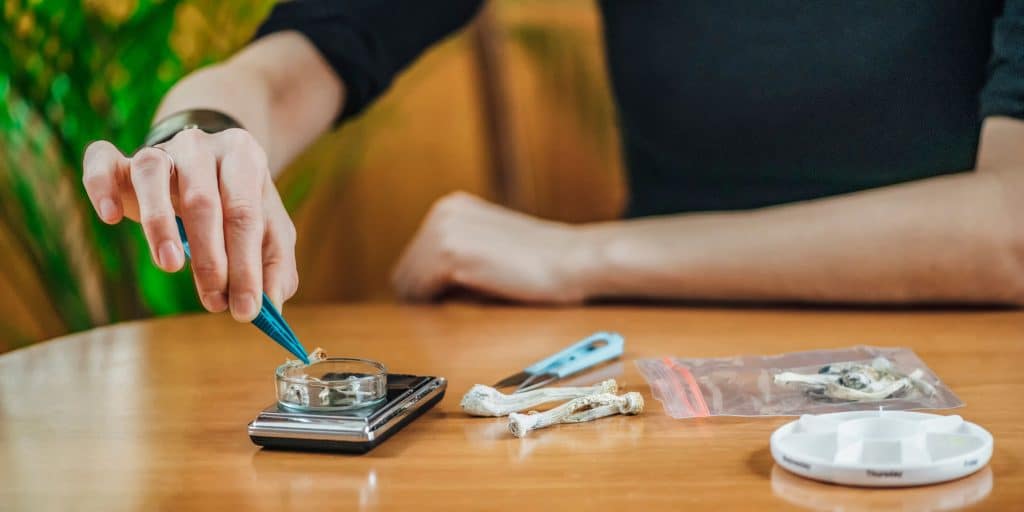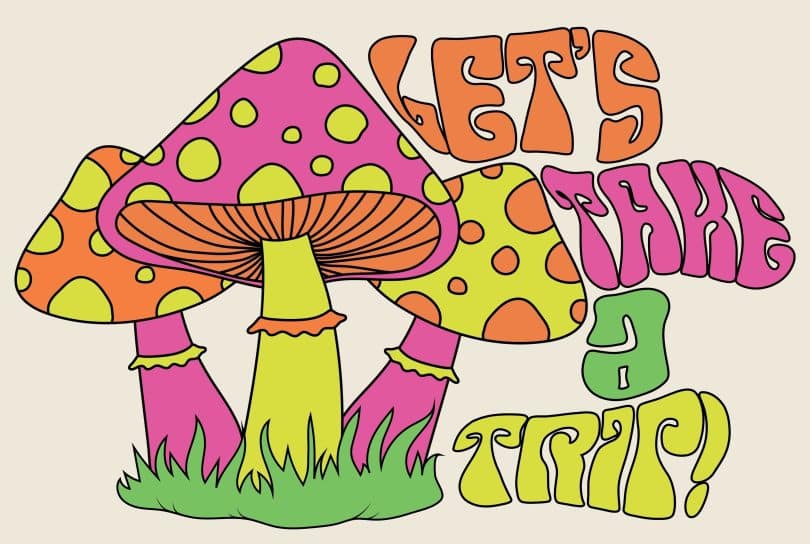Tolerance is one of the factors that can lead a person to OD on a drug, because it encourages them to take more than their body can handle. However, not every drug causes tolerance in the same way, and with some drugs, there are no problems. How does tolerance work with psychedelics? Read on to find out.
Drug tolerance exists with psychedelics, but doesn’t cause the same kind of problems as it does in other drug classes. Thanks for joining our independent publication covering topics in the cannabis and psychedelics industries. The publication runs alongside the Cannadelics Weekly Newsletter, a base point for regular updates on ongoing stories and breaking news. Sign up, and also get prime access to an array of deals on cannabis and psychedelics products, including vapes, edibles, smoking paraphernalia, and cannabinoid compounds like Delta 8 & HHC. Check out offers in our ‘best of’ lists, and only make purchases for the products you’re comfortable using.
Drug tolerance
Drug tolerance, in short, is drug desensitization. In other words, “a person’s diminished response to a drug, which occurs when the drug is used repeatedly and the body adapts to the continued presence of the drug.” This is similar to drug resistance, which has its own definition, and “refers to the ability of microorganisms or cancer cells to withstand the effects of a drug usually effective against them.” We are only interested in the first definition.
Drug tolerance comes from repeatedly using a drug until it requires more of the drug to get to the same response, that was obtained with smaller doses originally. How a drug is metabolized is one aspect of tolerance. When a body is repeatedly exposed to a drug it becomes more productive at breaking down the drug, and can then do so faster. Another aspect of it relates to the number of drug receptor sites, and their overall decrease in the continued presence of a drug; in order to stave off the reaction, less reactionary sites are used. Yet another aspect is in how strongly bonds are made between the drug and the receptor it attaches to, which can vary through time and use.
When we speak of drug tolerance, we’re often talking about how much of the drug is needed to produce certain effects, like getting high or relieving pain. But there are other effects that go along; like depression of the cardiovascular system if a person is taking a downer, or its stimulation, if on an upper. Just because a person might require more fentanyl, or more cocaine, to feel the same high as they did when they started their habit, it doesn’t mean their heart can take the amount necessary to create the new high.

No matter how much fentanyl or cocaine a person ingests, they don’t increase the ability of their autonomic nervous system, which controls actions like breathing, keeping the body at the right temperature, and heart rate. If a person must take a very large dose of fentanyl to access its analgesic effects, this could lead to an overdose, due to nervous system depression at a greater level than the body can handle to survive.
Tolerance and psychedelics
People aren’t known for being strung out on psychedelics the same way they are on opioids. You don’t usually hear about people tripping out as frequently as you hear about them taking lines of cocaine. And I’m not saying psychedelics aren’t popular, but they’re not used constantly, even by the biggest aficionados.
When it comes to how tolerance works with psychedelics, there is limited research. No general consensus exists that tolerance among different psychedelics is the same. However, there is reason to believe it’s created similarly, based on the ways the drugs are used, and the receptor sites (5-HT2A receptors) they attach to.
This is not true between different classes of hallucinogens, like between psychedelics and dissociative hallucinogens. For example, ketamine therapy might come with its own issues of tolerance, but not the same ones that magic mushrooms or LSD produce. As the different hallucinogenic classes effect different neurotransmitter receptors, they cannot be expected to cause tolerance in the same way.
The sort of tolerance that psychedelic mushrooms, (and other psychedelic compounds), cause, is called tachyphylaxis, which translates to the “appearance of progressive decrease in response to a given dose after repetitive administration of a pharmacologically or physiologically active substance.” This, of course, sounds like the definition of tolerance in general, just using different words, and it is. As tolerance to any drug is a short-lived event following the drugs’ use, this definition is just a reiteration of the general concept. So, what’s the real difference?
Perhaps one big fundamental difference between drugs like opioids and psychedelics, is not in the idea of tolerance, but in the idea of addiction. A person on opioids doesn’t just want to get high again, their body might start to feel sick if they don’t. A physical addiction isn’t about getting high (necessarily), but about easing negative symptoms. So even at a time when the body is desensitized, the urge is there to find the amount that will cause a new effect.

Since psychedelics don’t have addiction potential, there’s no real reason for a person to attempt to be on them constantly, which means most people aren’t trying to gain a new high, right after being high. Bodies can naturally cool down, and return to their normal tolerance level before the next dose. For drugs that drive an addiction – whether physical or just psychological, the desire is more likely to be there to override the period of tolerance.
How does tolerance work with psychedelics?
As said, research is limited, but some does exist. LSD studies show that right after use, tachyphylaxis kicks in, and receptors deregulate very quickly, and stop producing the same action for a period of time. It’s also seen that there’s cross-tolerance between LSD, magic mushrooms, and mescaline, as they all work on the same receptors. Cross tolerance indicates building a tolerance to one substance by using, and building a tolerance to, a similar substance.
So if a person takes a magic mushroom trip on Friday, they’re not likely to have the same experience if they take the same amount of mushrooms on Saturday. Or if they take LSD. It’s not recommended to take trips that close together for this reason. At retreats, for example, its common to leave at least 24 hours in between trip sessions, if not more time. Some people opt not to do trips within weeks or months of each other, but the drug should be worked out of the system within a day or two.
The time in between is time for the substance to be metabolized out, and for the neural response to go back to normal. The longer the half-life of the drug, the more chance for it to stick around in the body, and the longer it might take for the body to return to a normal state.
Differences in tolerance
When it comes to tolerance and psychedelics, its not that different from other drugs, like opioids, where we associate a person constantly needing to take more to reach the same high/pain relief level. Both cause the body to temporarily stop reacting to the compounds in the same way, for at least a little while after taking them. Thus making the compounds seem less active, requiring higher doses to reach the same effect level, or creating a general inability to do so. But there are differences.
Unlike drugs like opioids, psychedelics don’t produce the same kind of addictive tendency, meaning a person simply isn’t driven to continue trying to take them when their body is in the after-high state. That drive is important, because it dictates whether a person will attempt to override tachyphylaxis, and get high again during the down period following a high. If a person only takes fentanyl after each session of tachyphylaxis, they’d be less likely to build – and maintain – an overall addiction. That fentanyl drives people to take more during this period, and that psychedelics don’t, certainly says a lot for the difference between the compounds.

When it comes to overdosing from tolerance, psychedelics haven’t shown a potential for causing death, indicating that the body stops responding to them. This is unlike opioids, which deliver – and keep delivering – a powerful blow to the autonomic nervous system. After a point of ingestion, a person’s heart will stop beating. Period. Psychedelics illicit a response from the autonomic nervous system, but at a certain point, seem to stop. Why this happens is not understood, but it is consistent among psychedelics.
Psychedelics therefore aren’t associated with the problems that come with over-accumulation and death. People do experience bad trips, but they don’t get to a point where the system is overloaded in the same way. Psychedelics don’t cause users to try to take more and more in a short period, and don’t cause overdose deaths if someone does. Both of these factors mean that psychedelics aren’t responsible for the same level of damage that other drug classes are capable of.
Conclusion
Tolerance most certainly exists with psychedelics, but not in a way that matters for their use. In order to avoid dealing with an inability to get effects, users should simply leave a little time in between sessions. Given their lack of ability to cause addiction, this shouldn’t be a problem.
Hello readers! Thanks for making it over to Cannadelics.com, your top choice for fully-rounded and 100% independent reporting on the growing cannabis and psychedelics spaces. Join us whenever you get a minute, to stay informed on these exploding industries; and sign up for the Cannadelics Weekly Newsletter, so you always know what’s going on.









